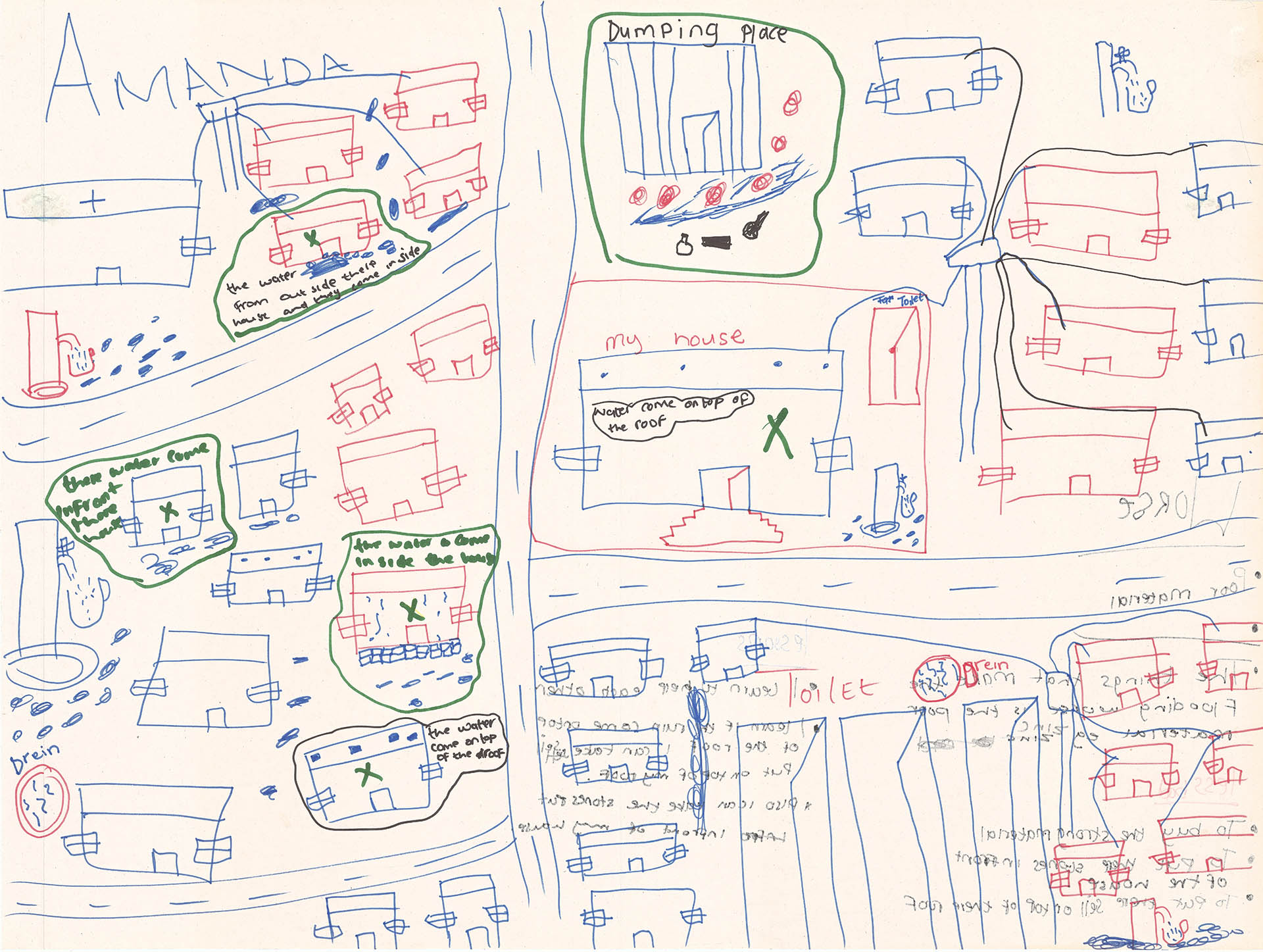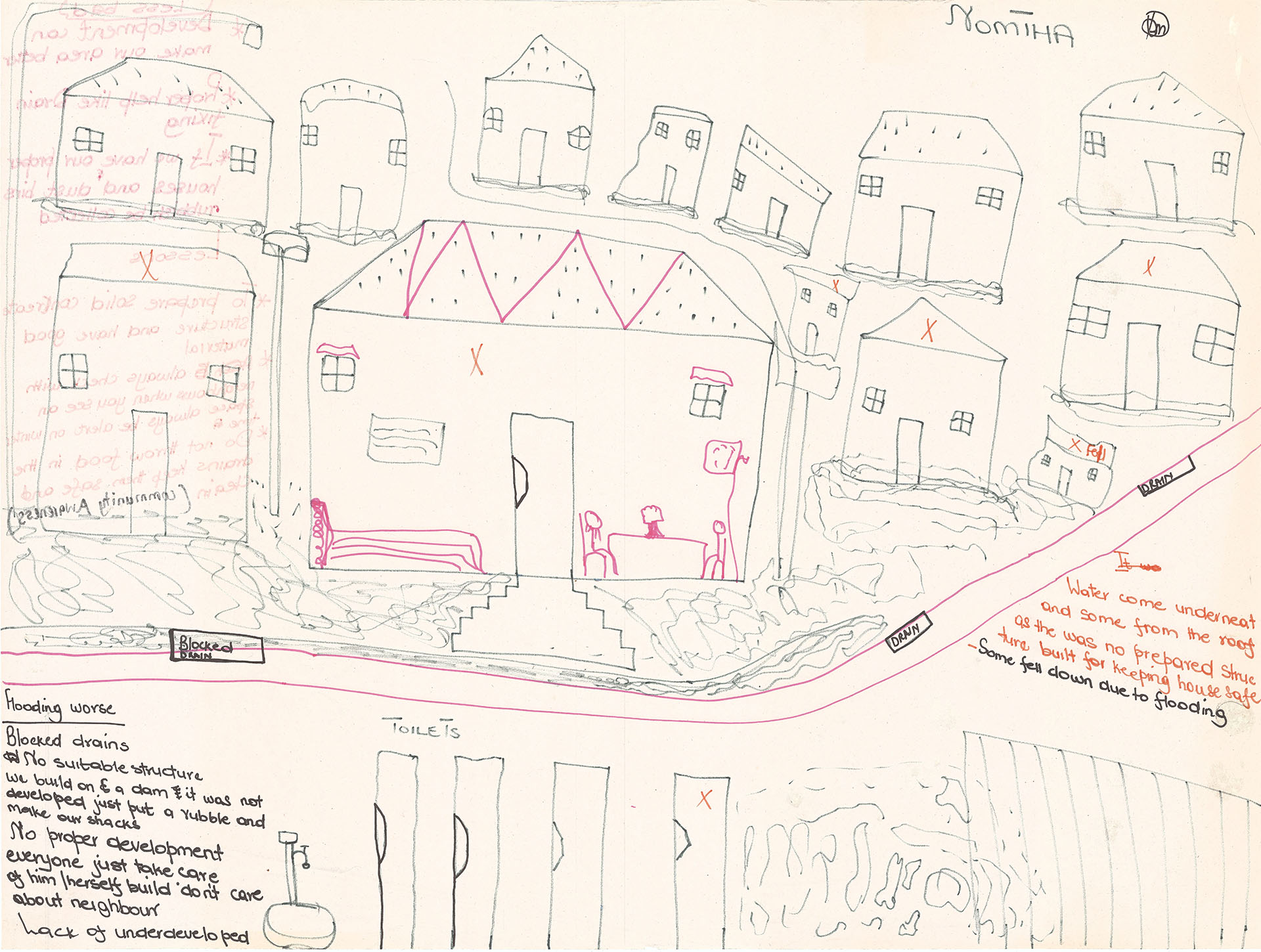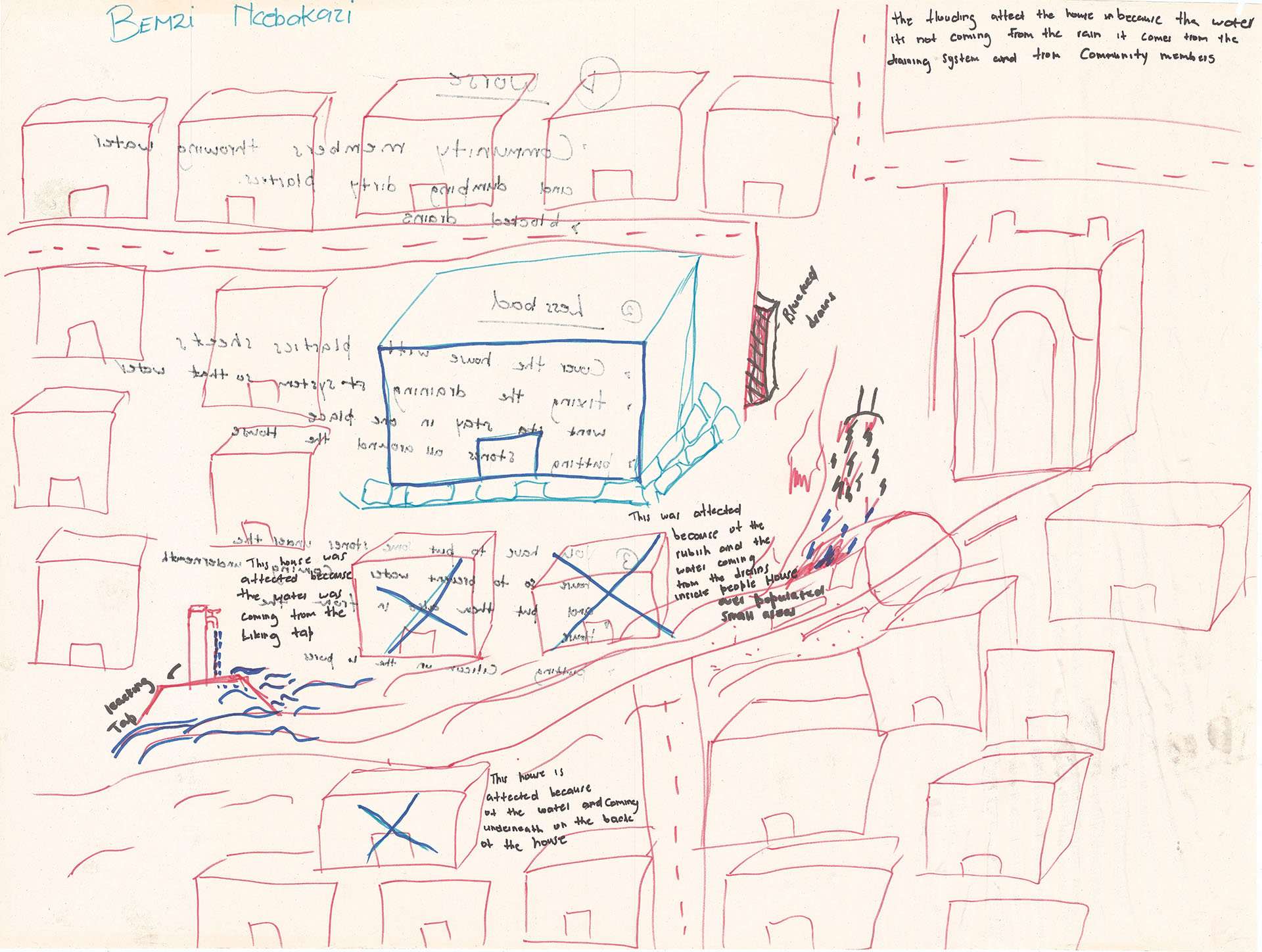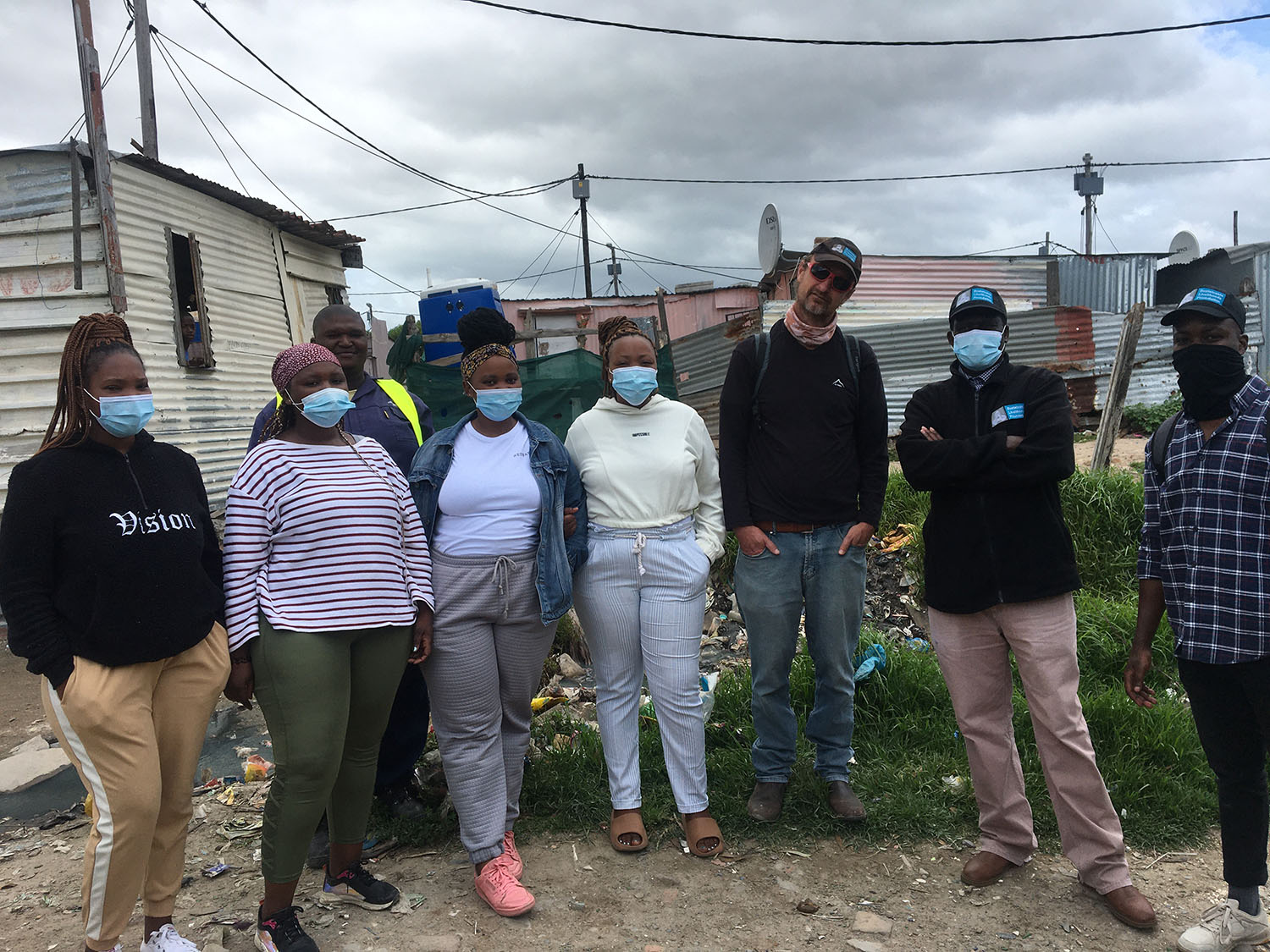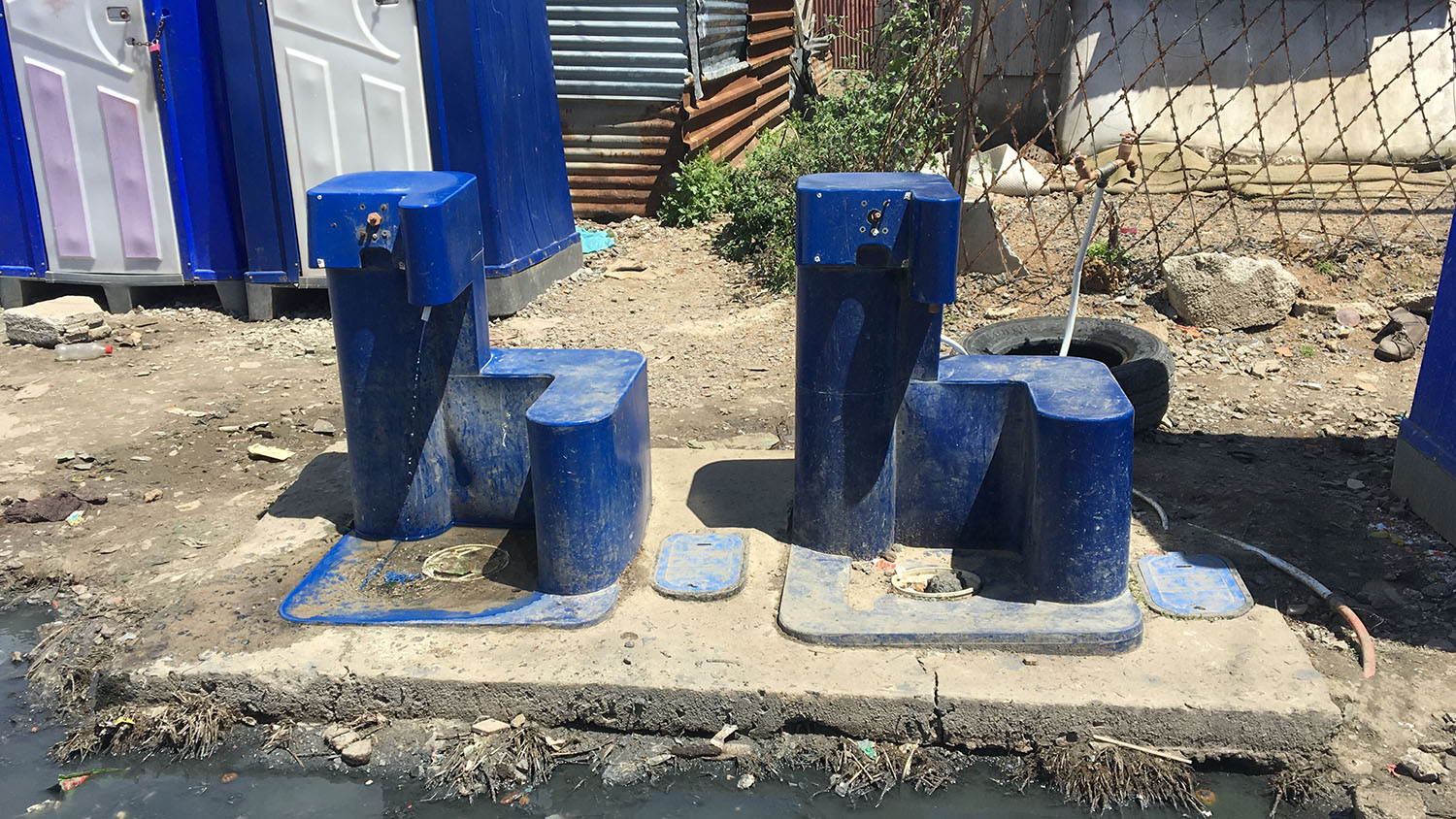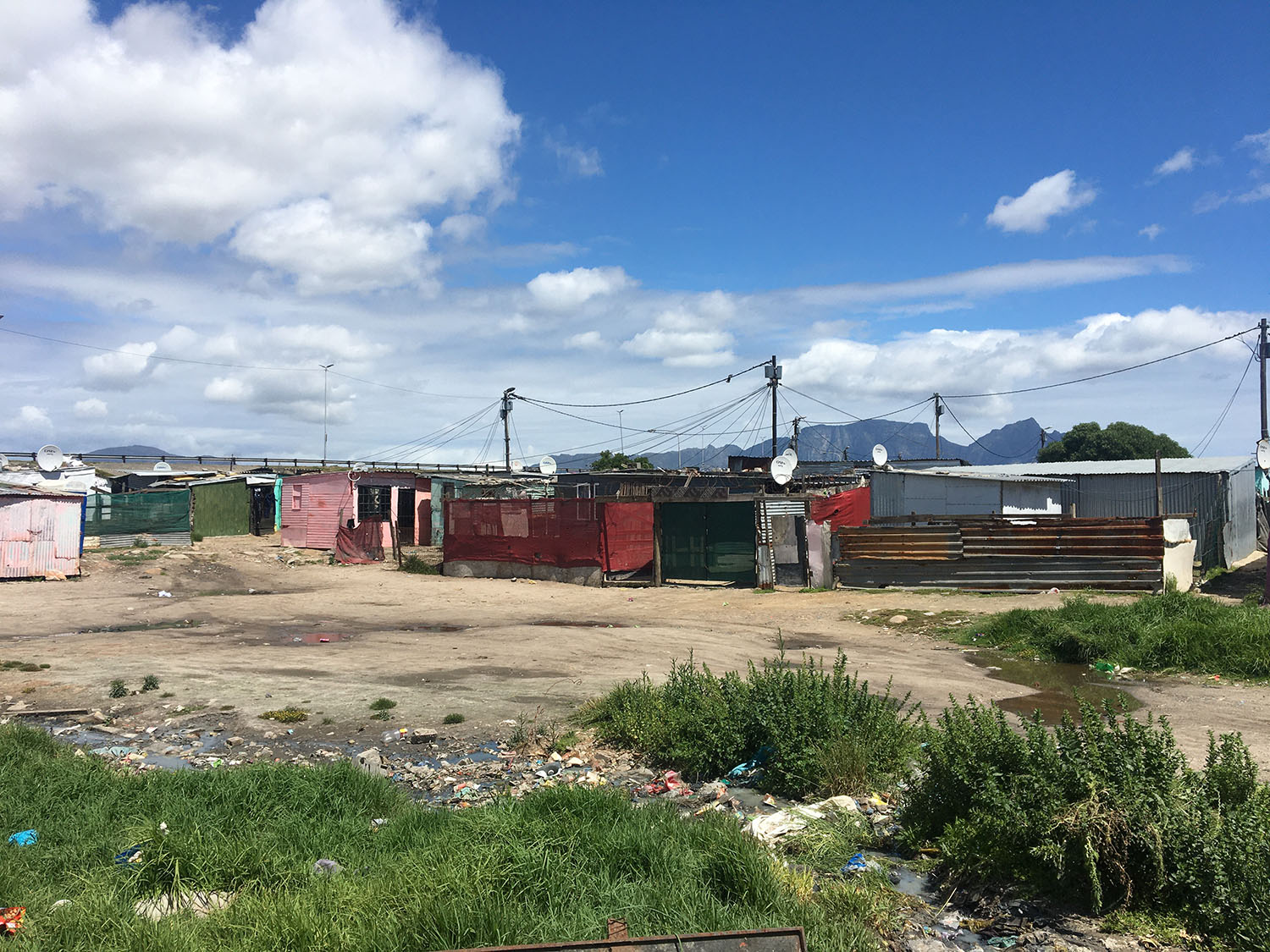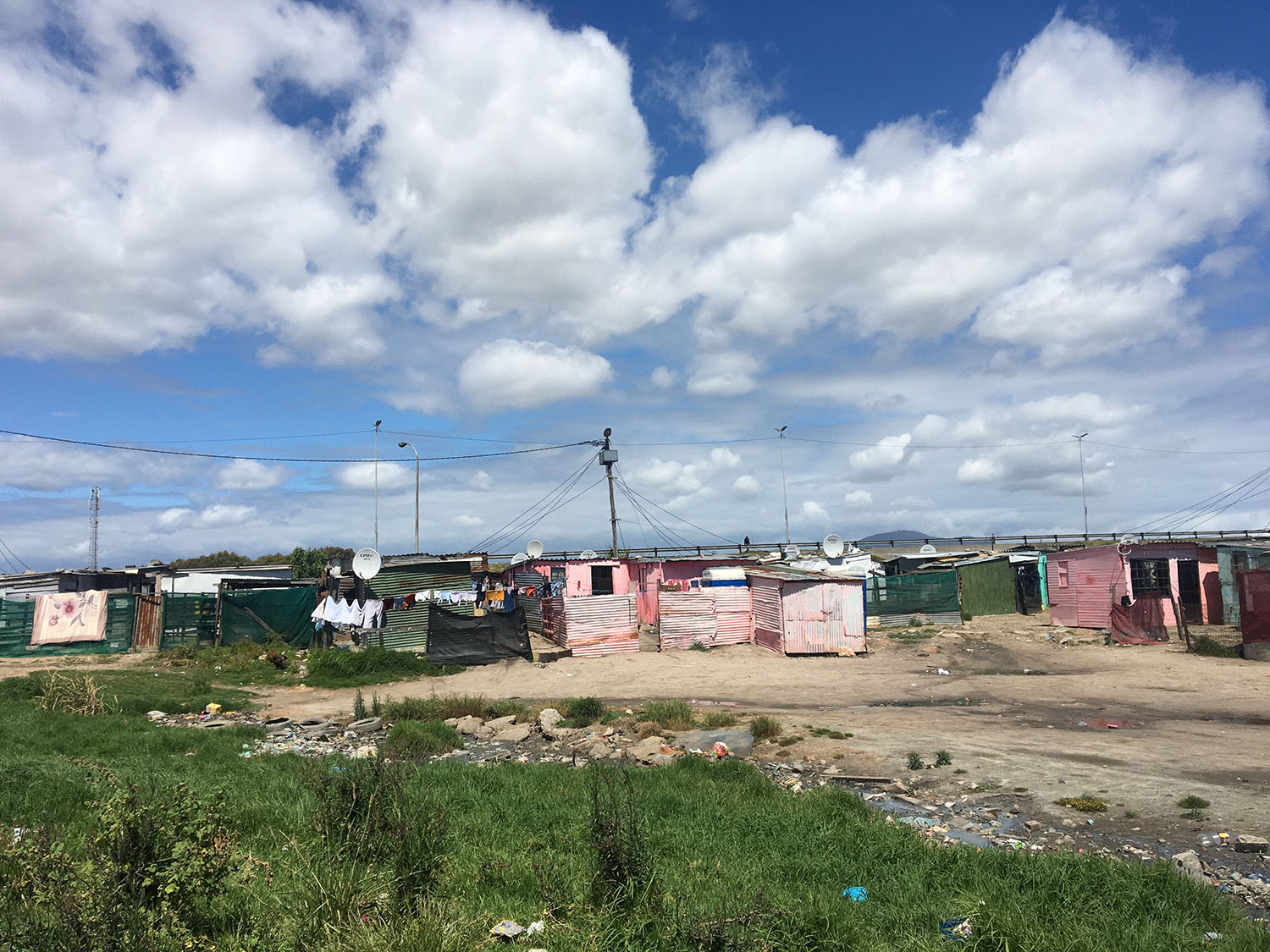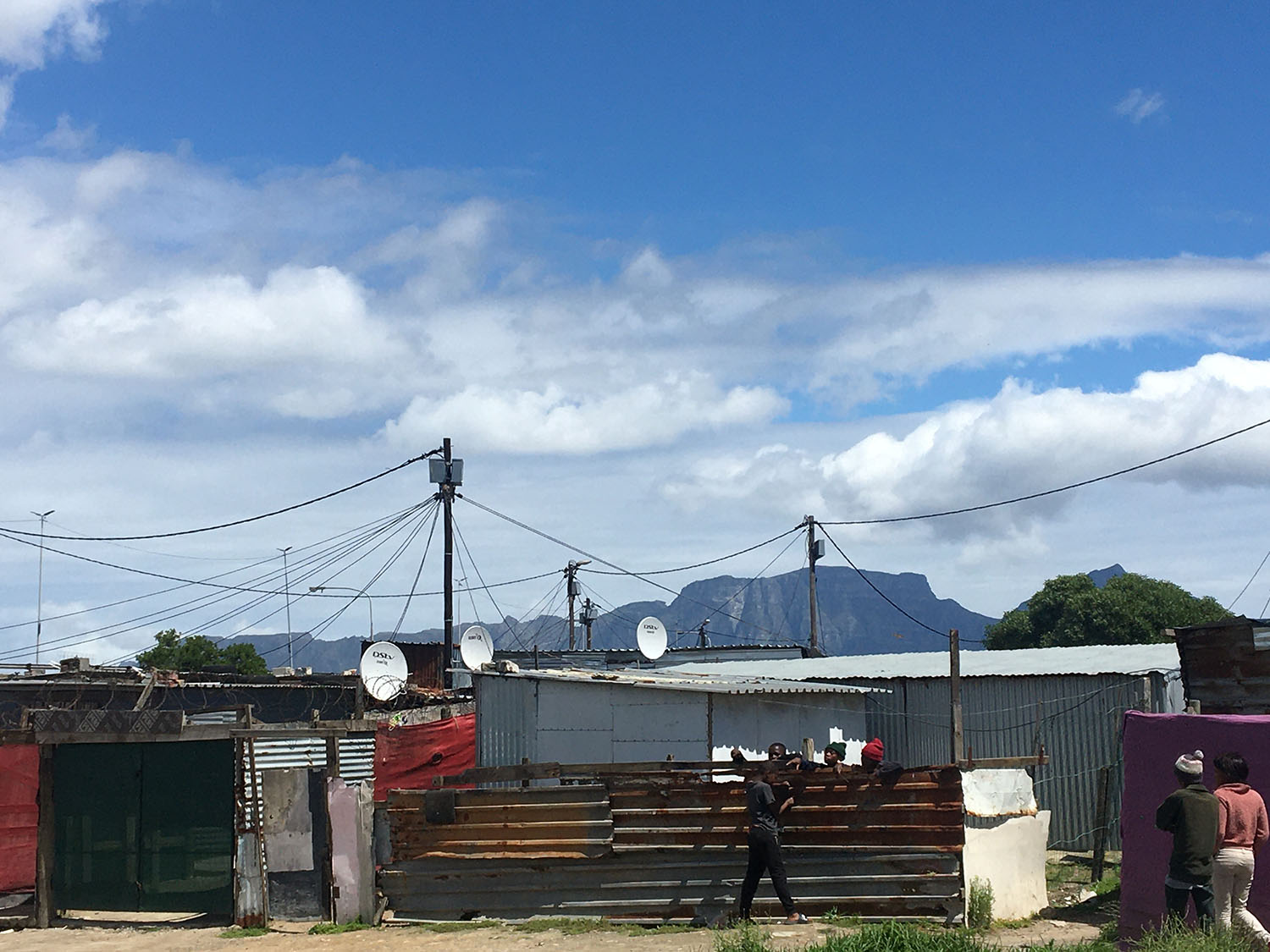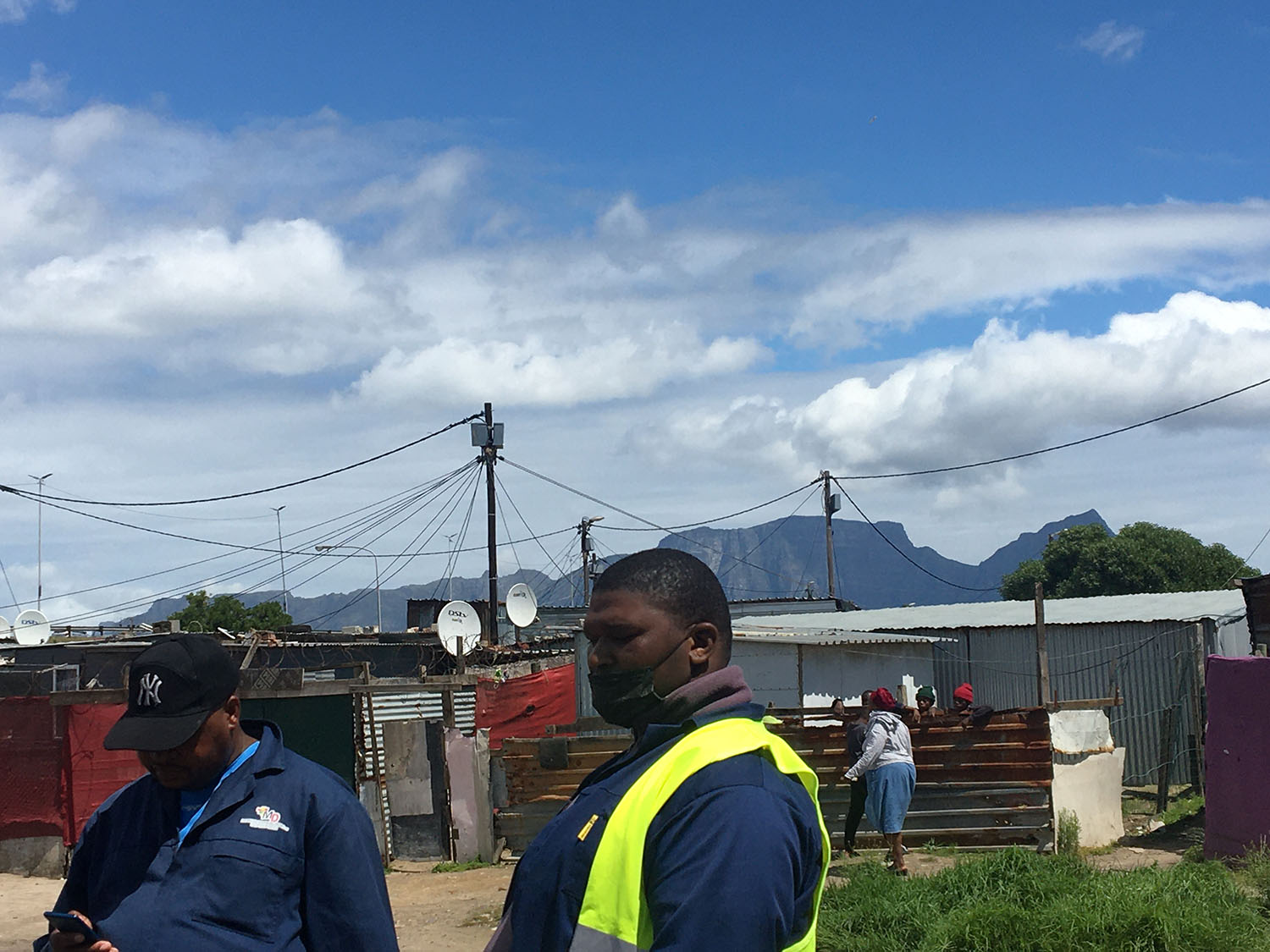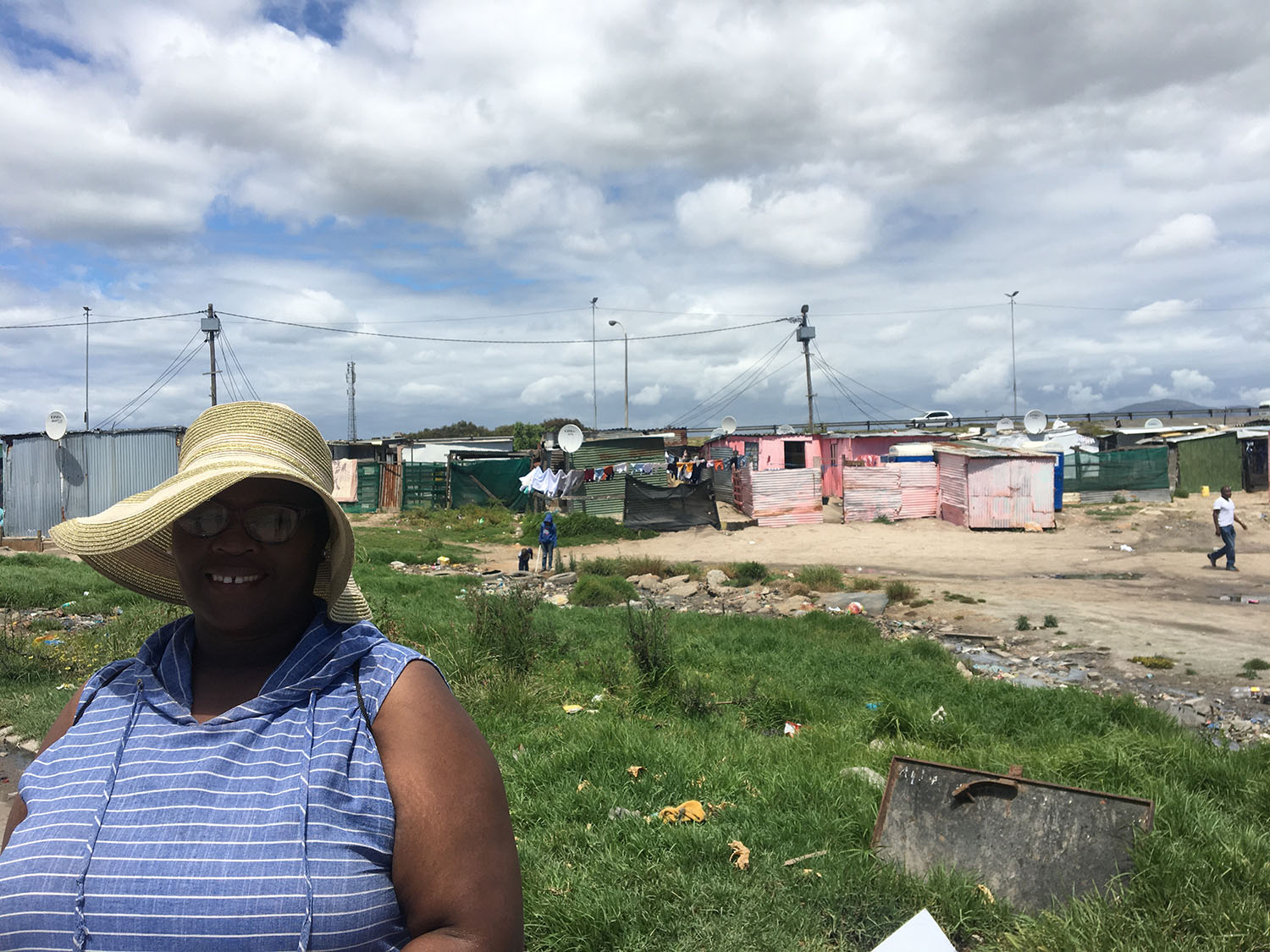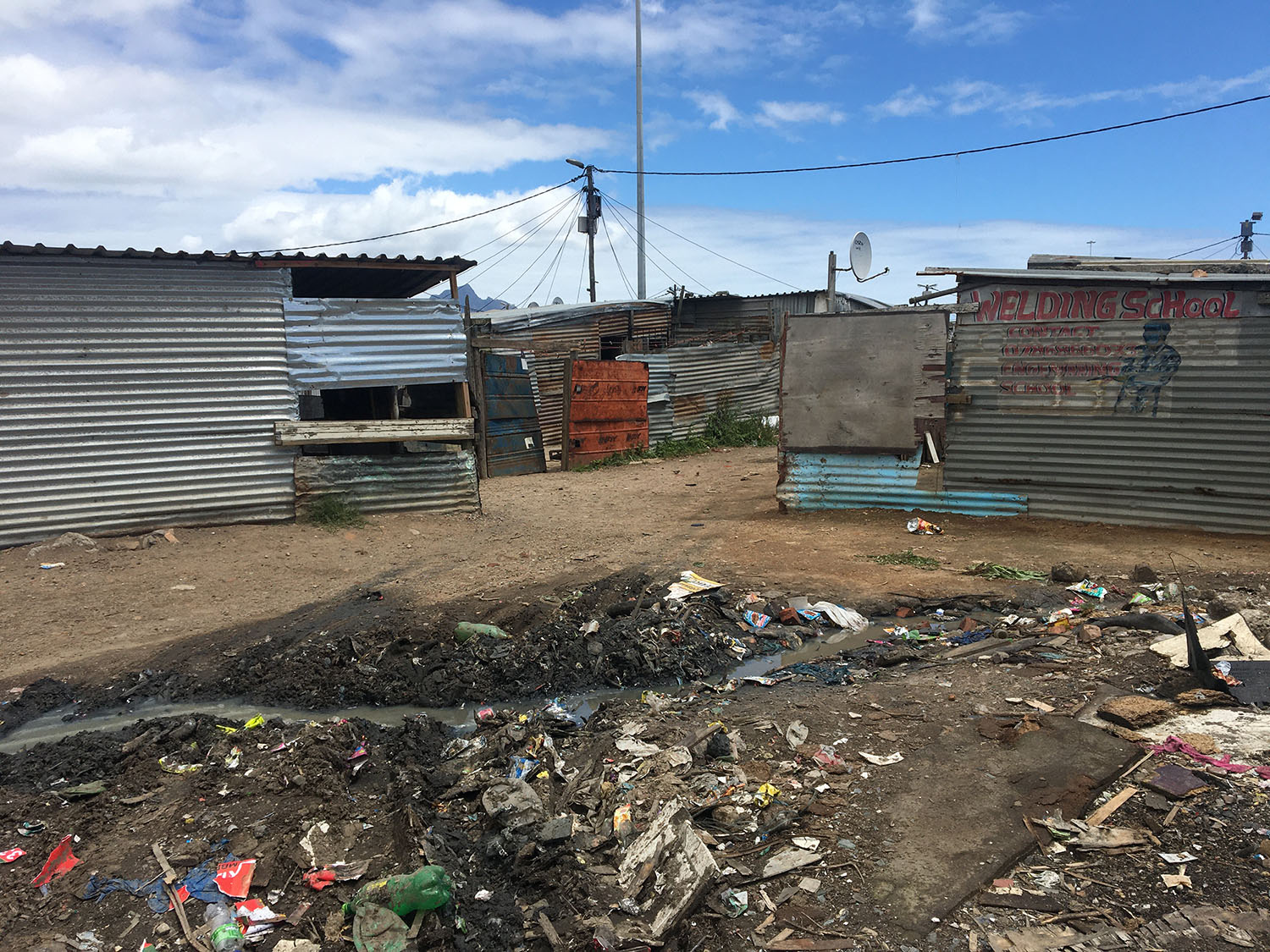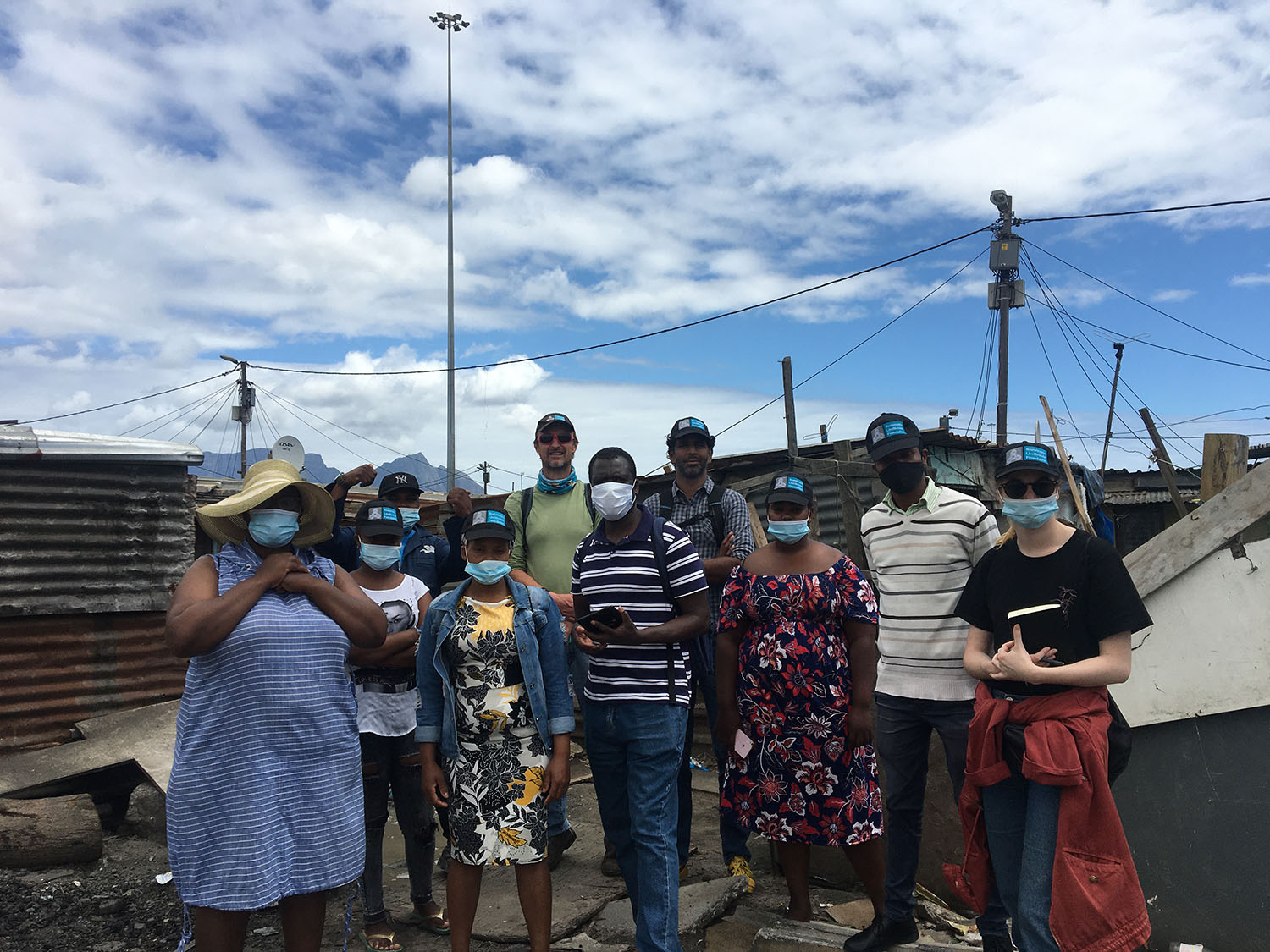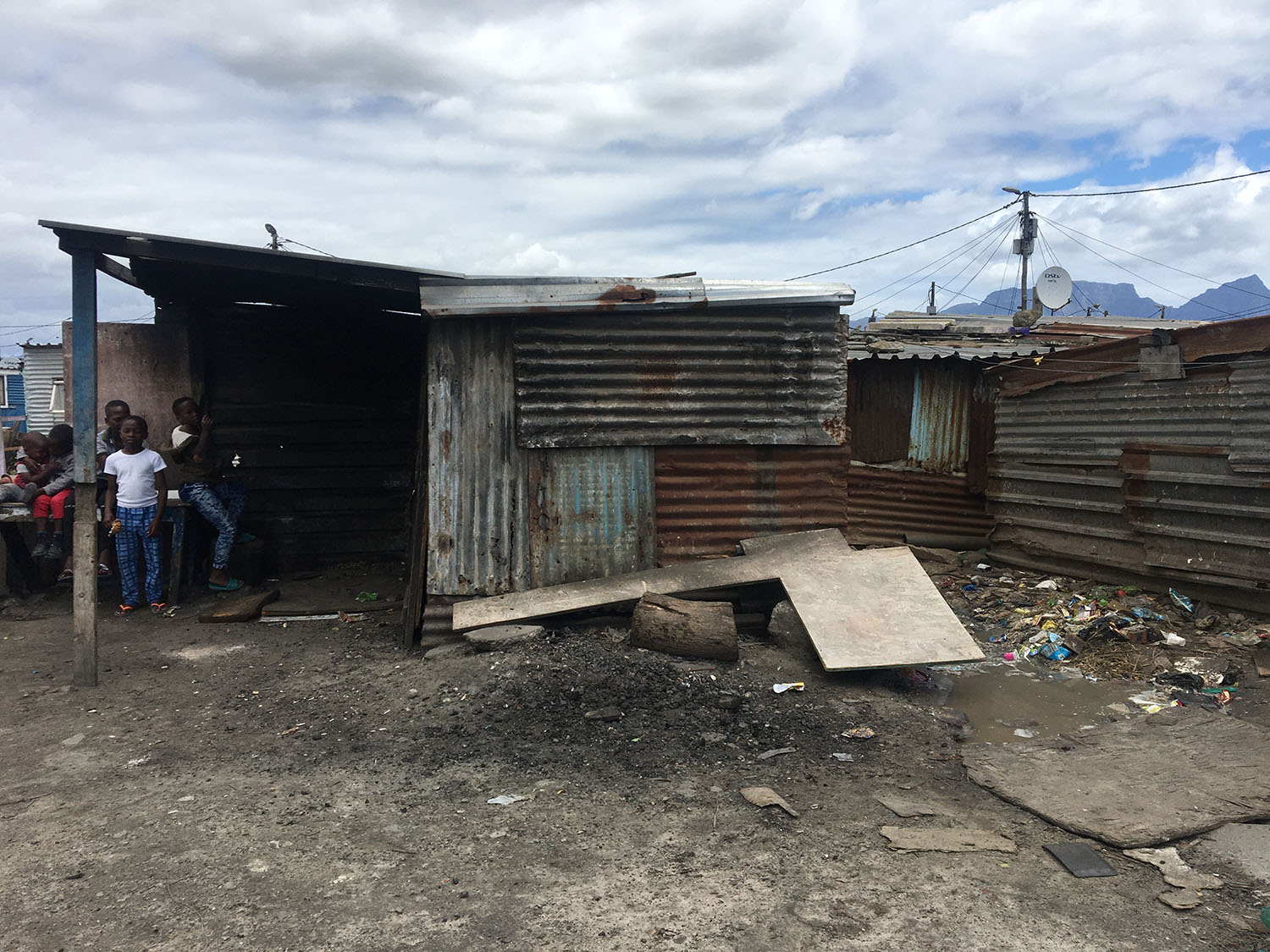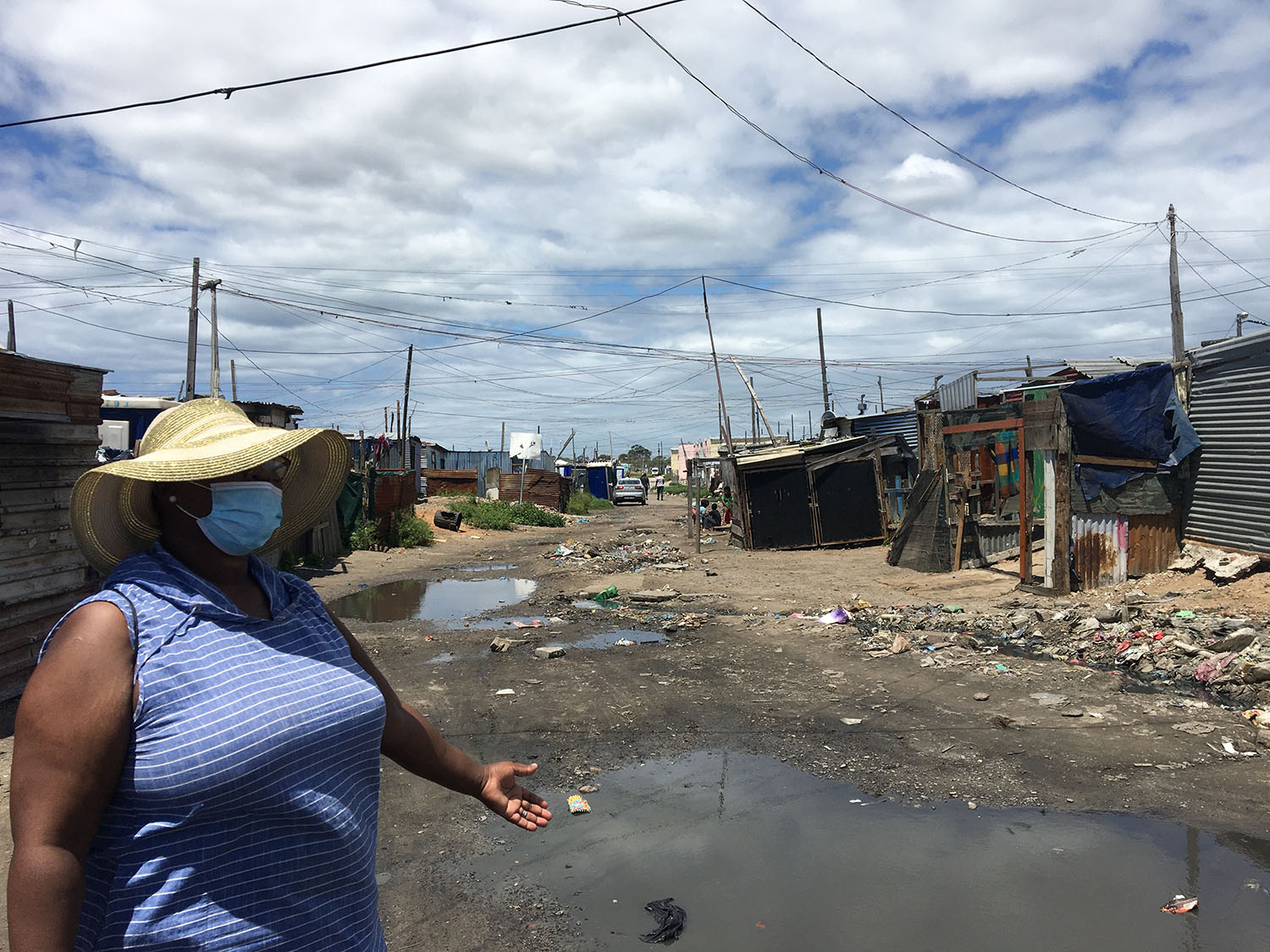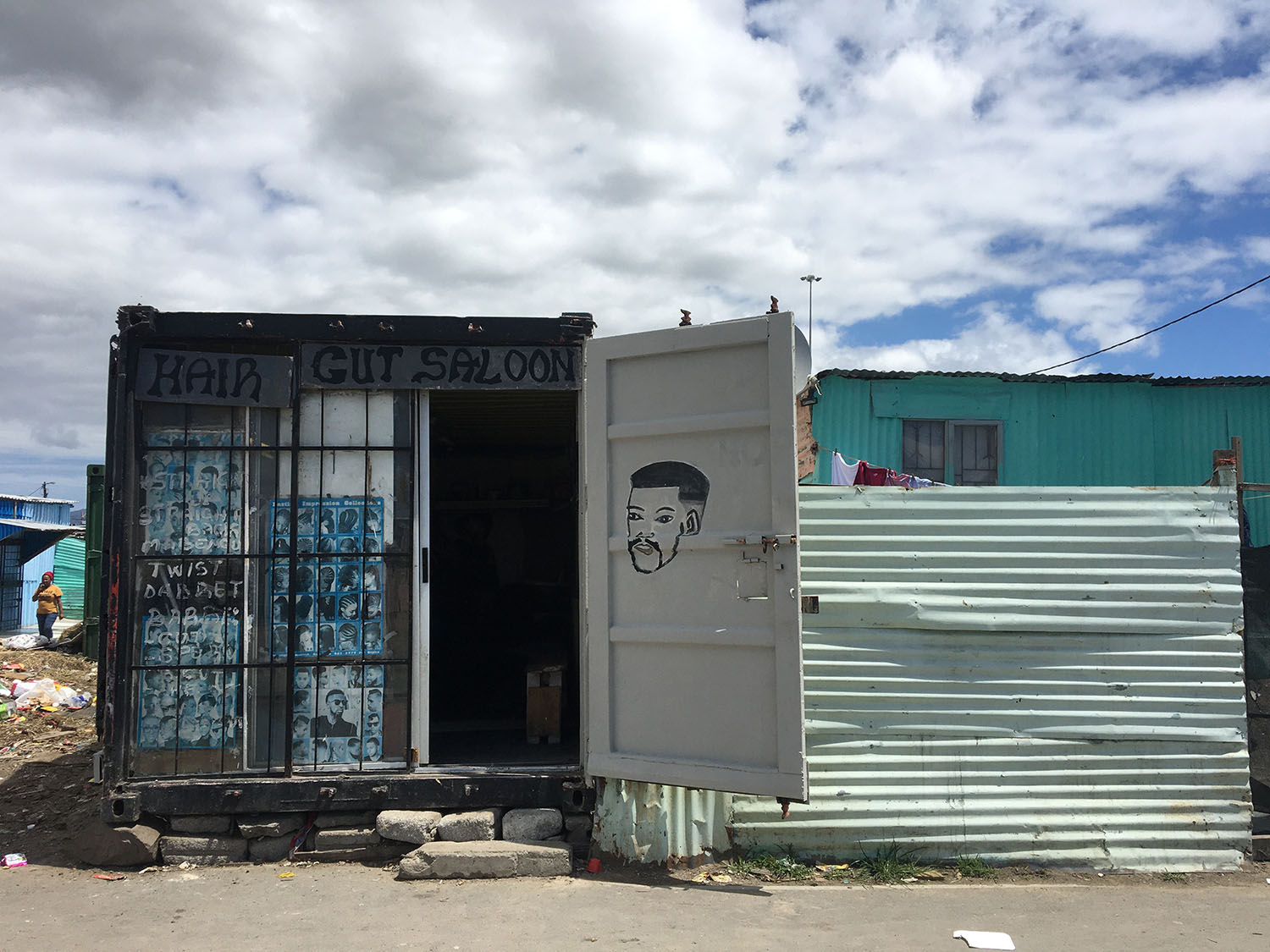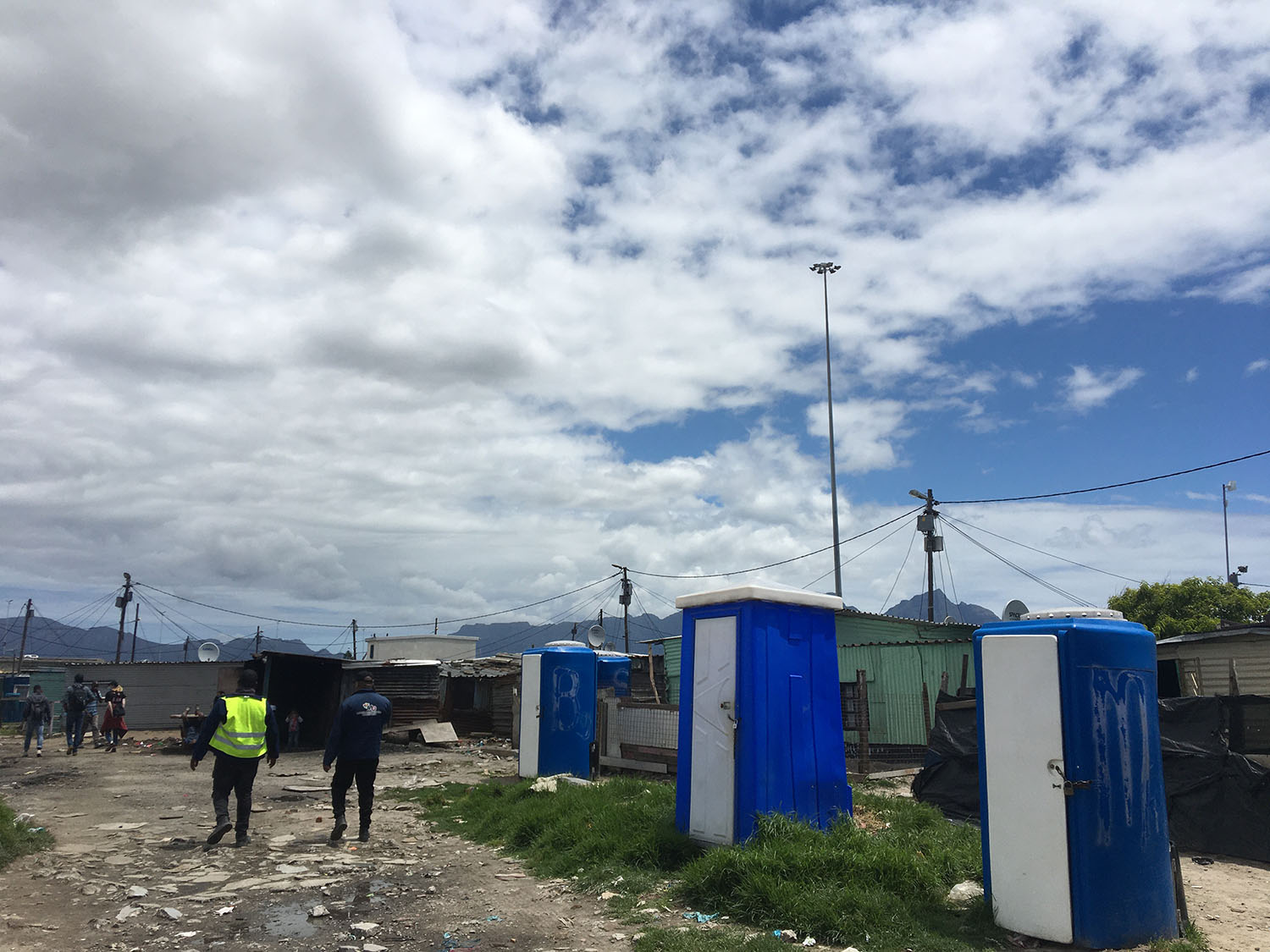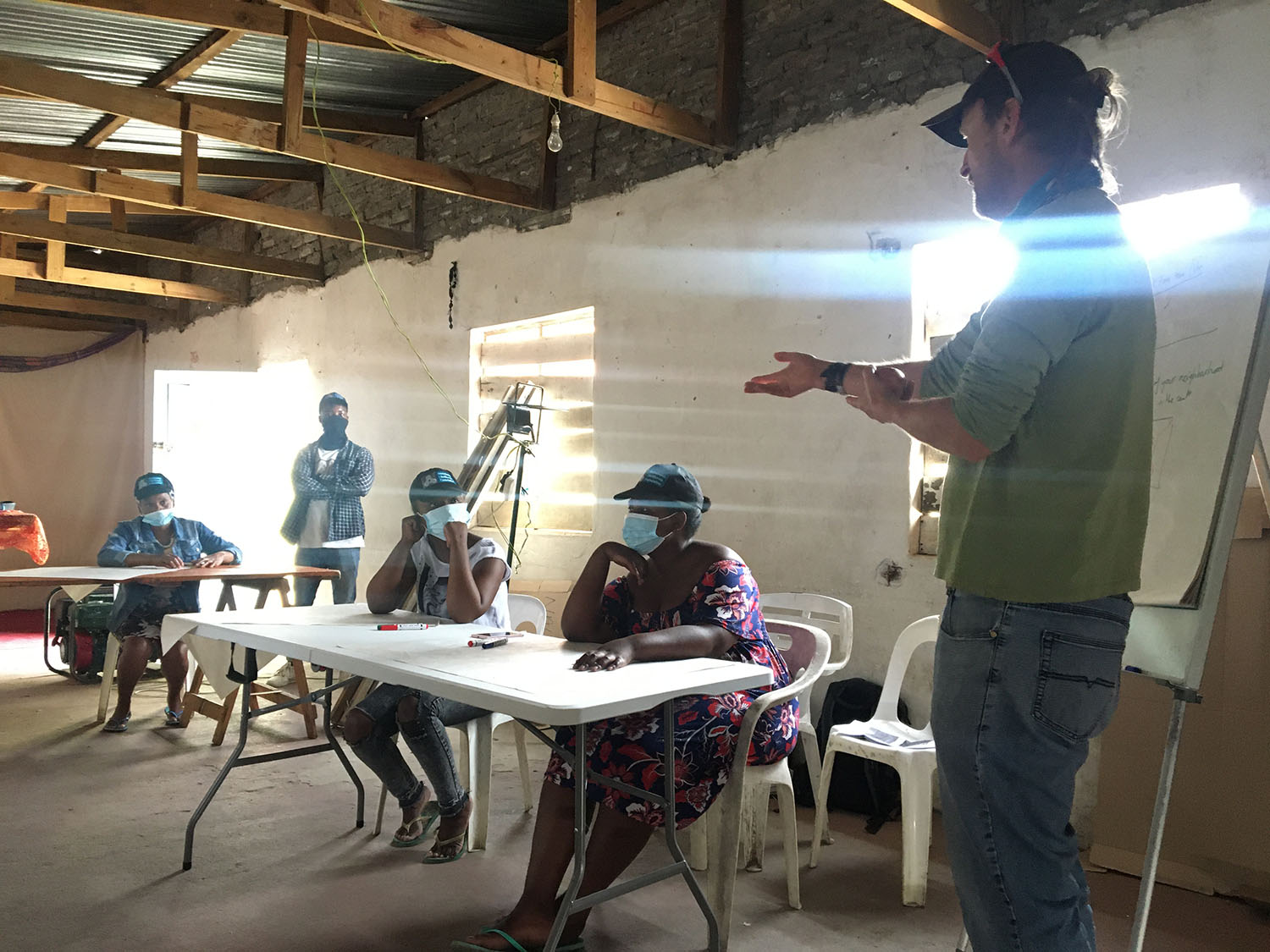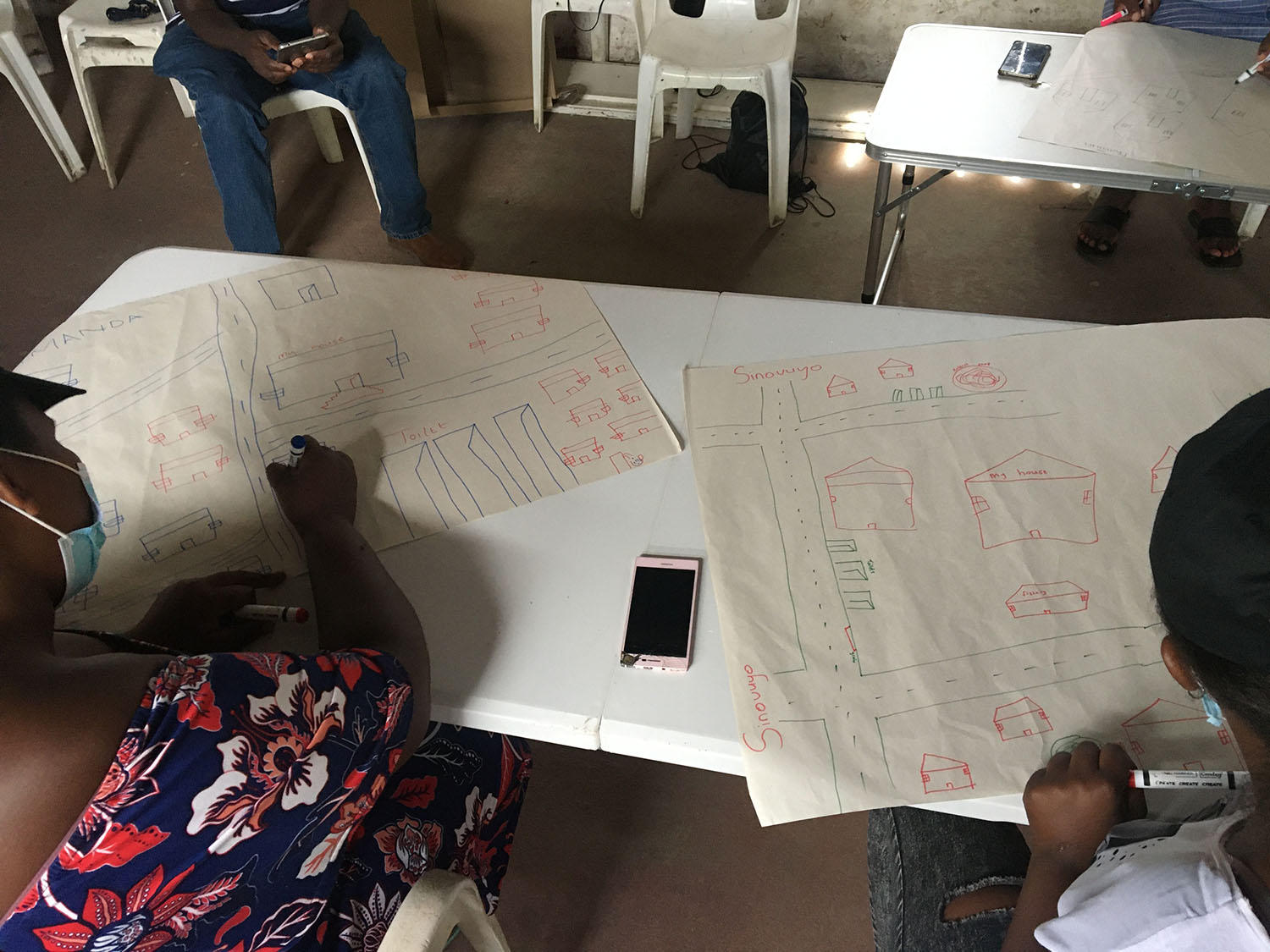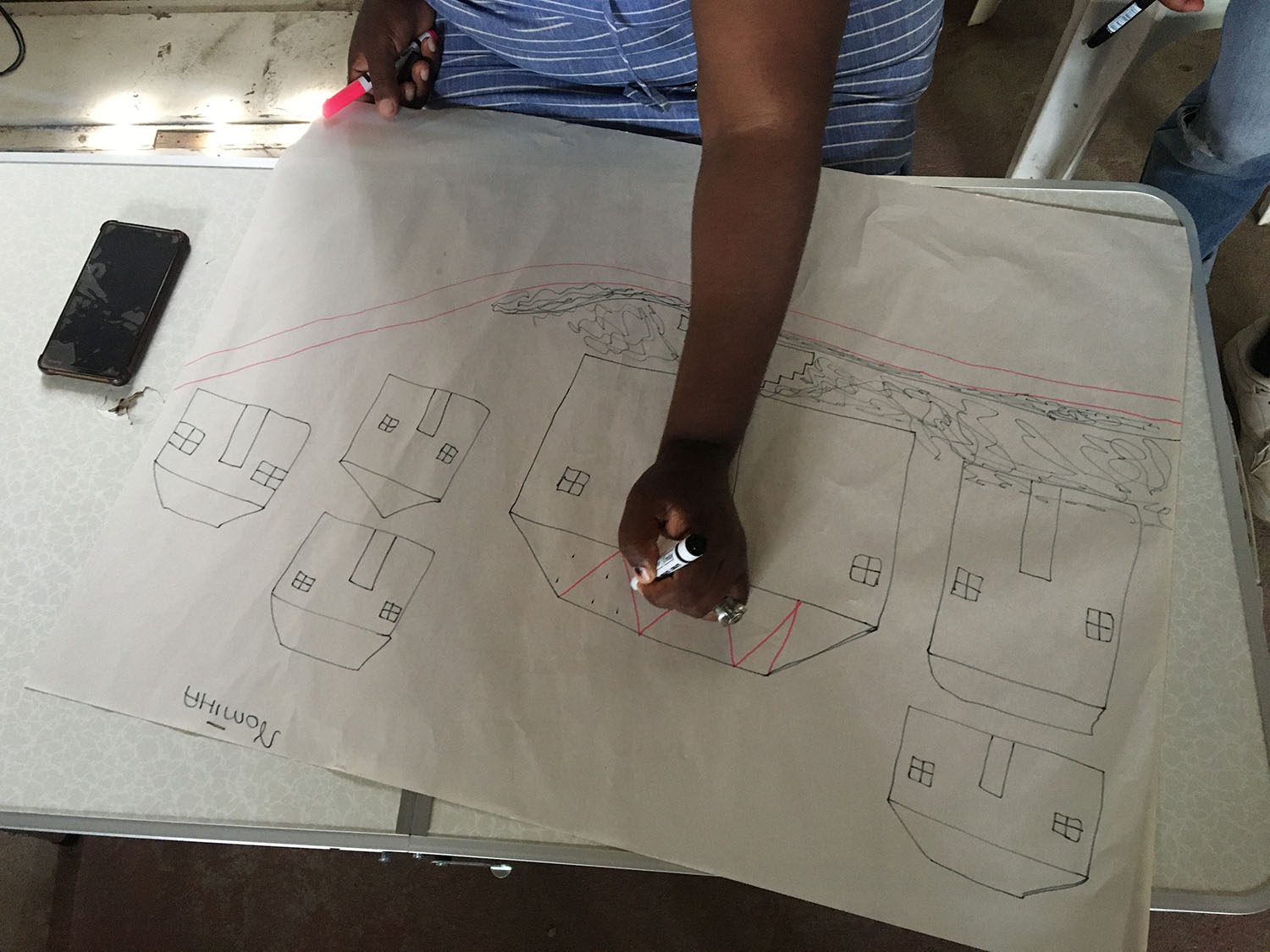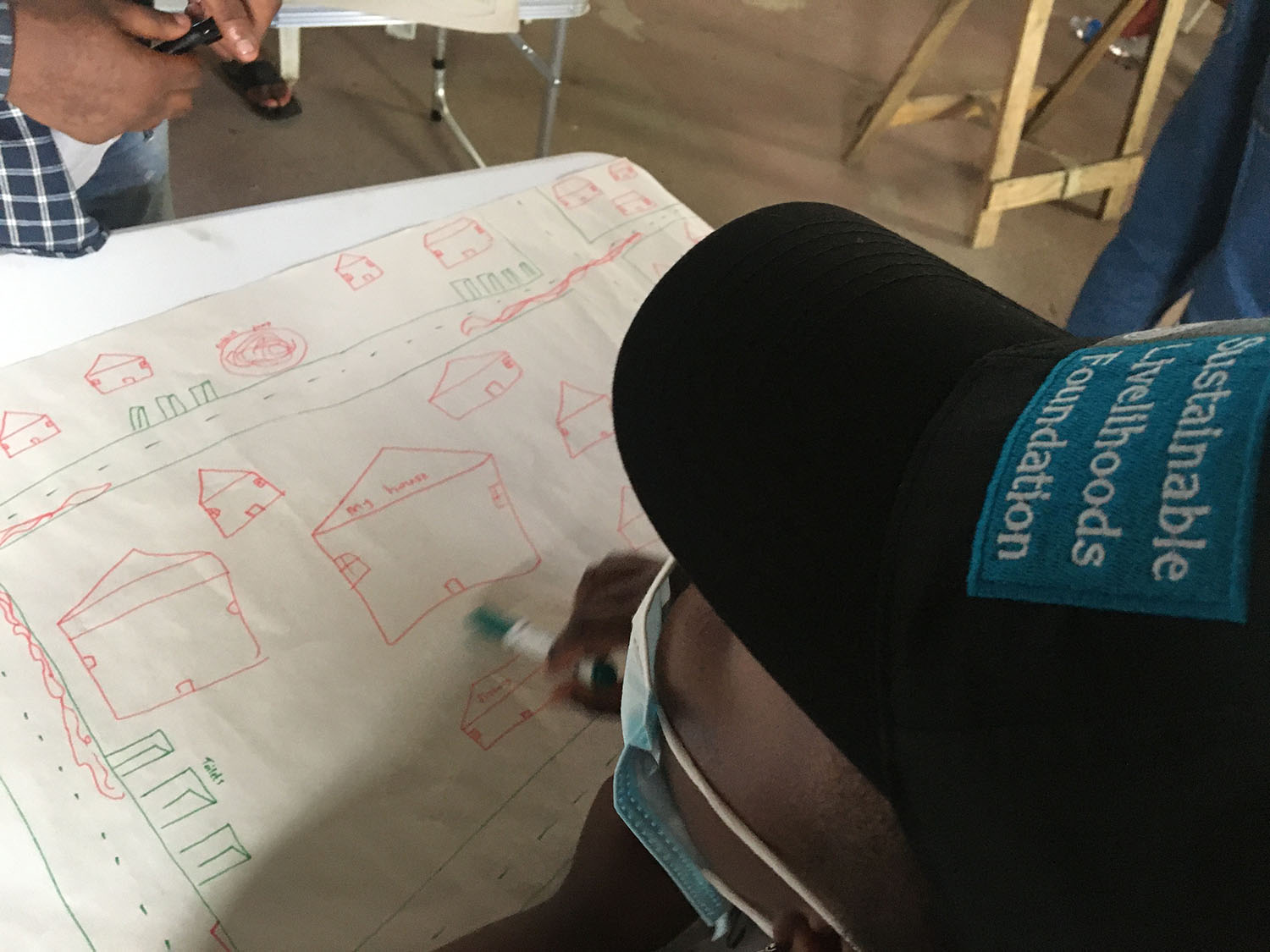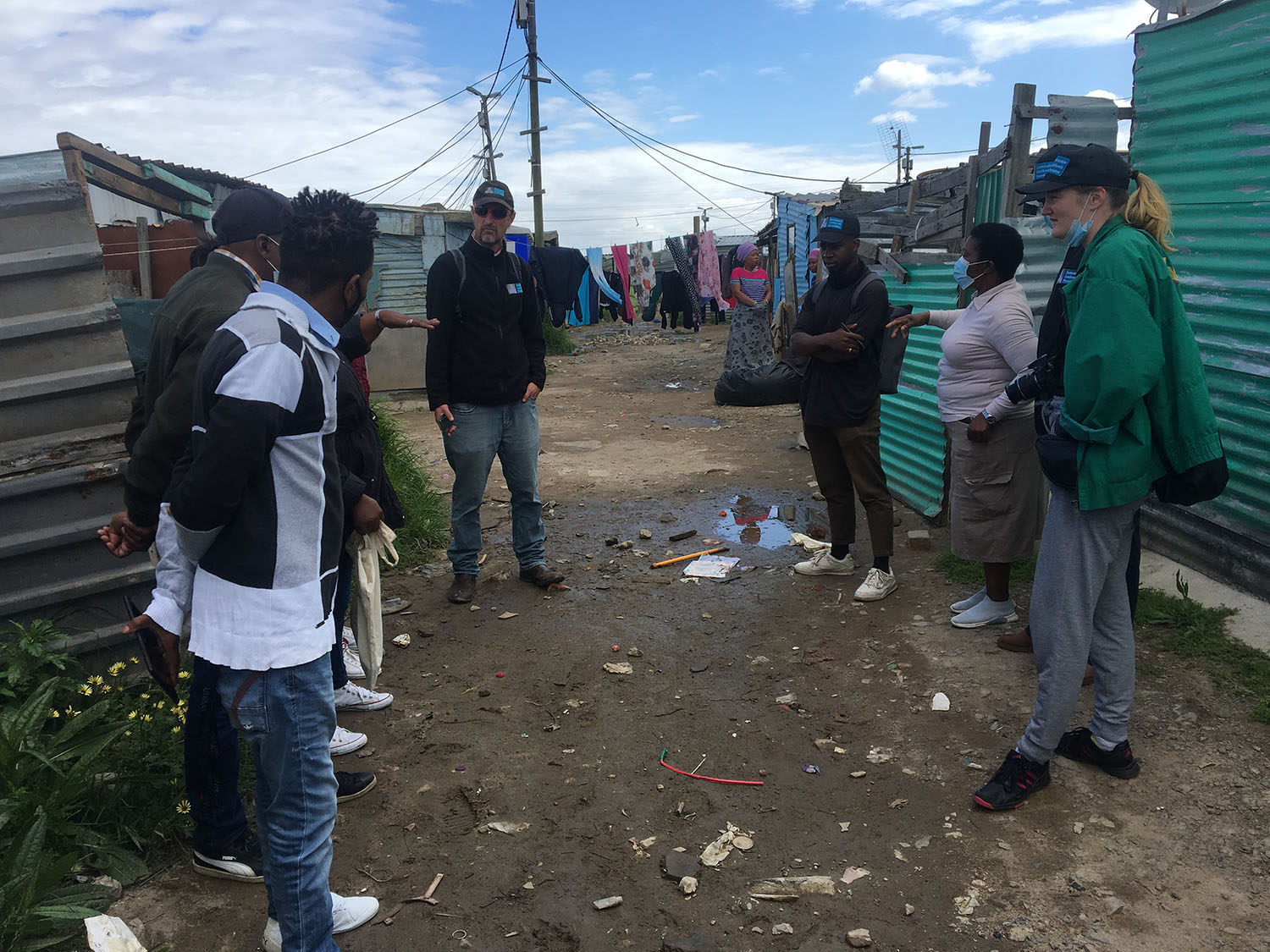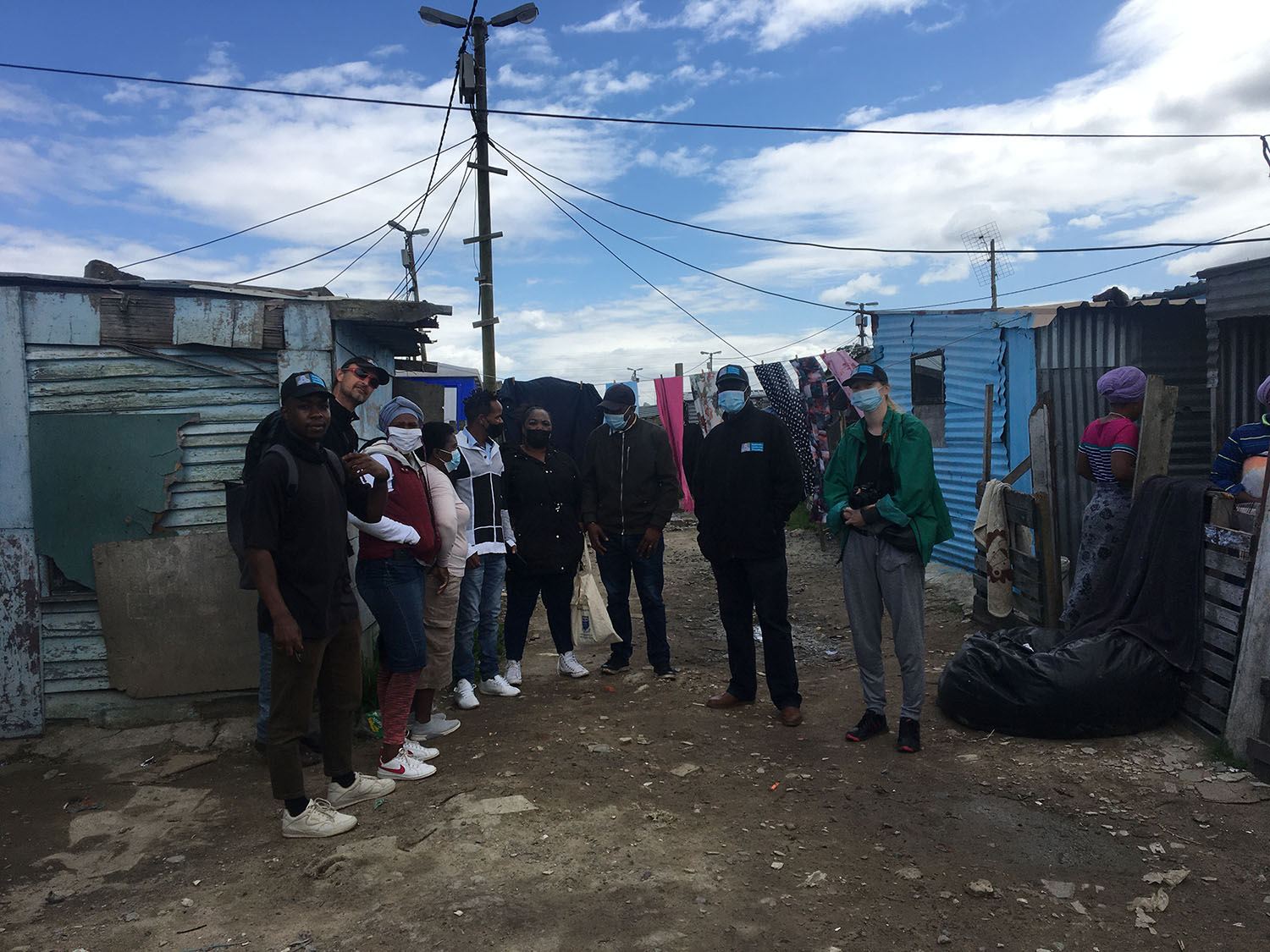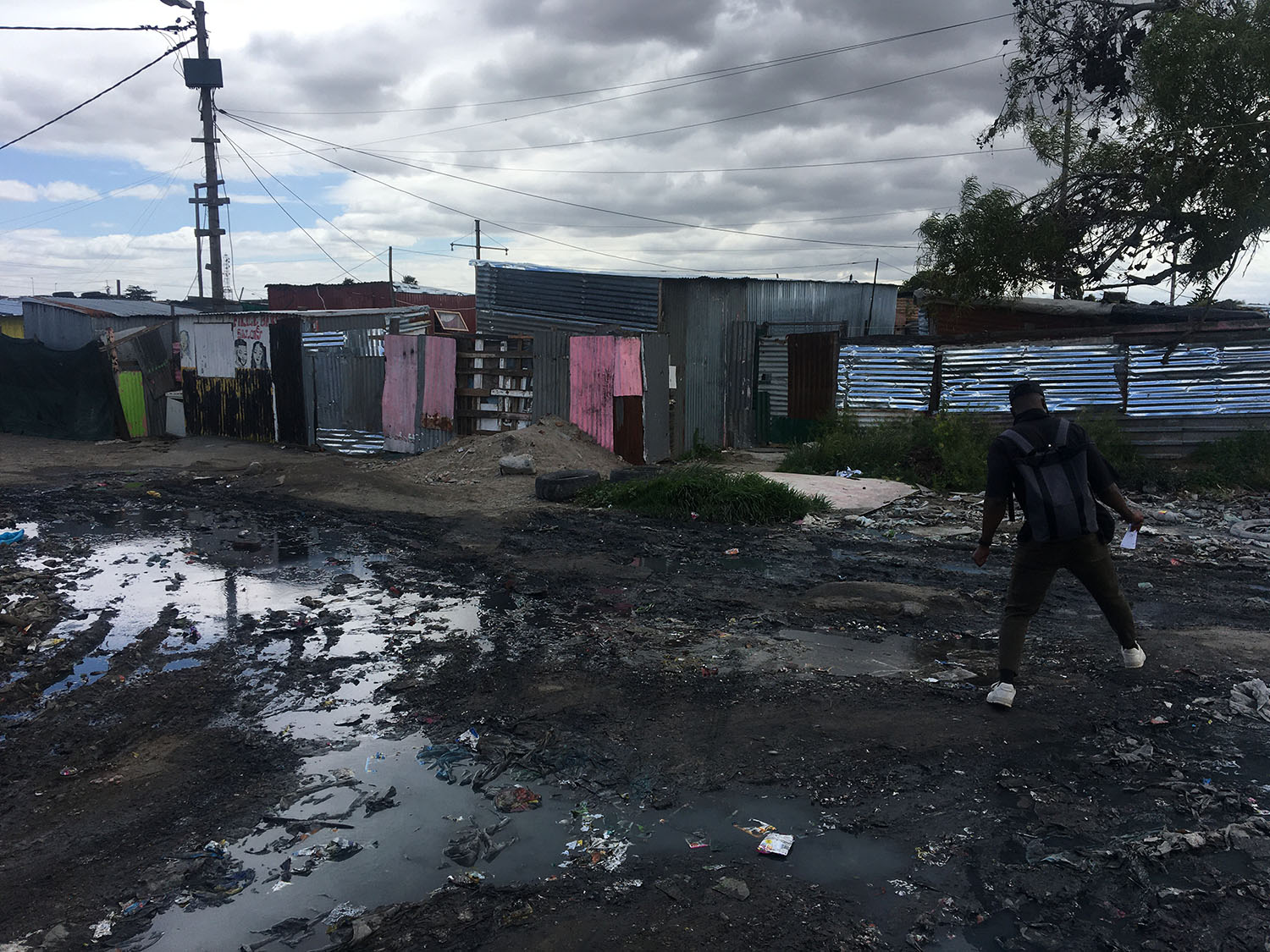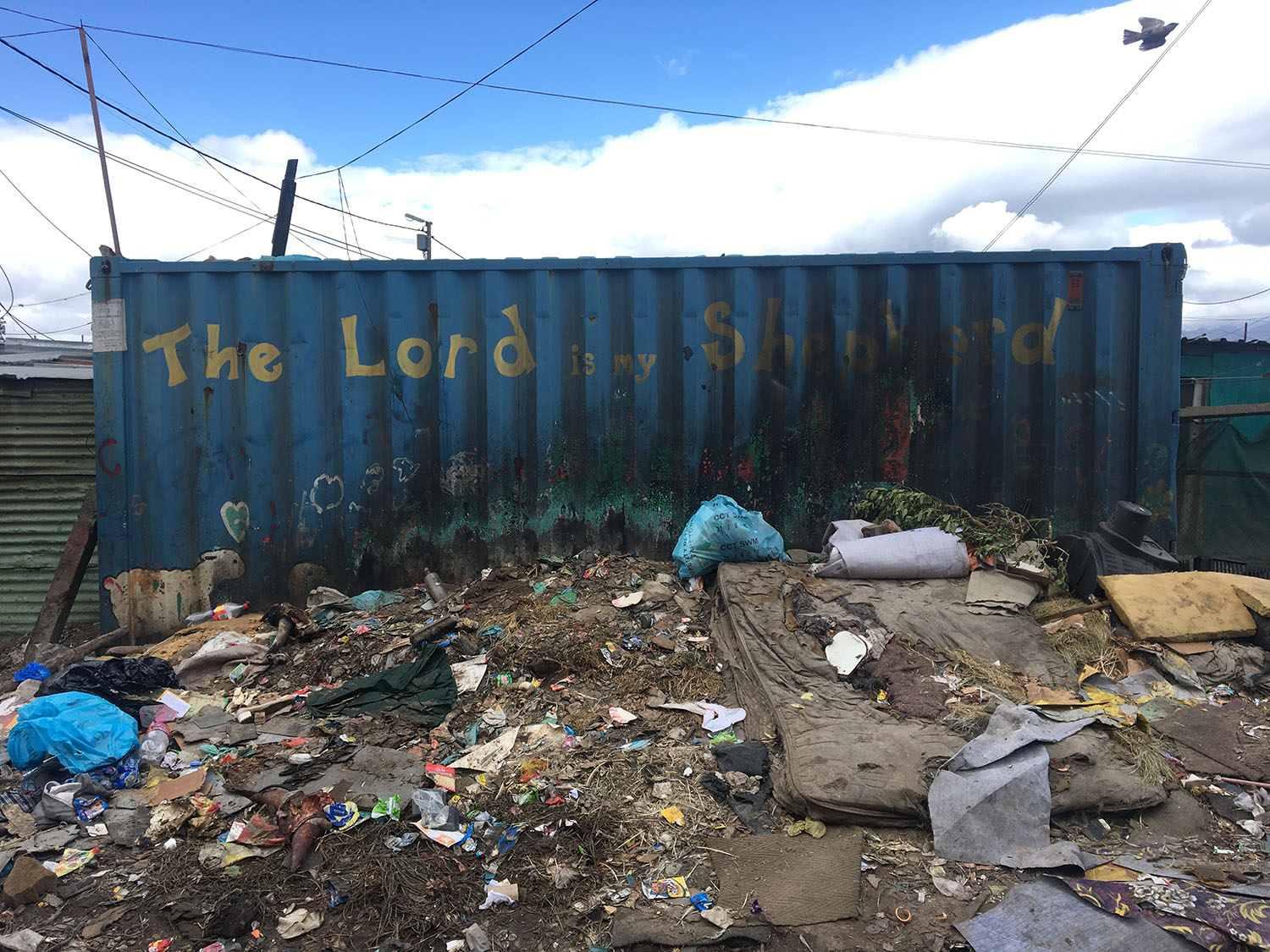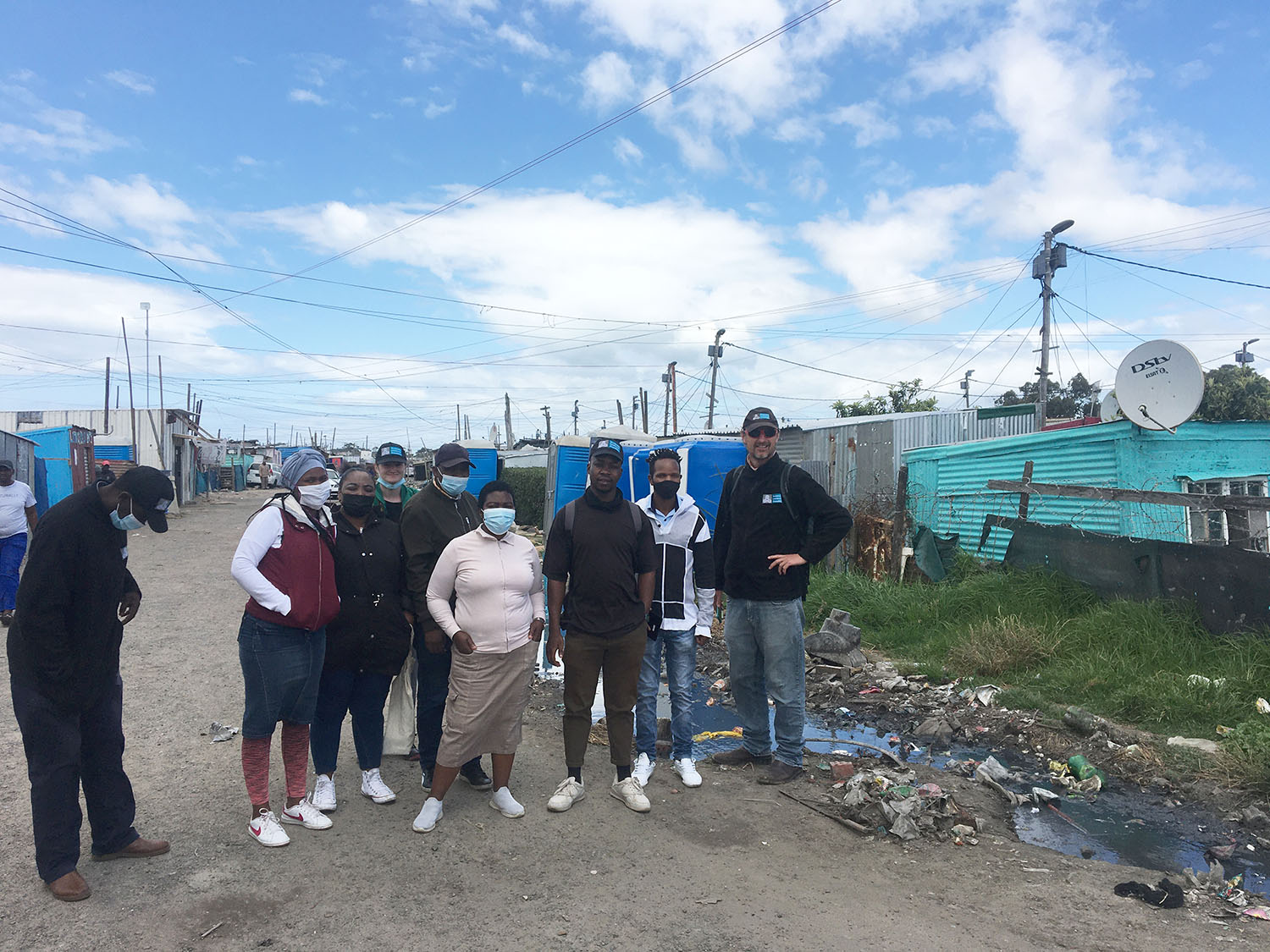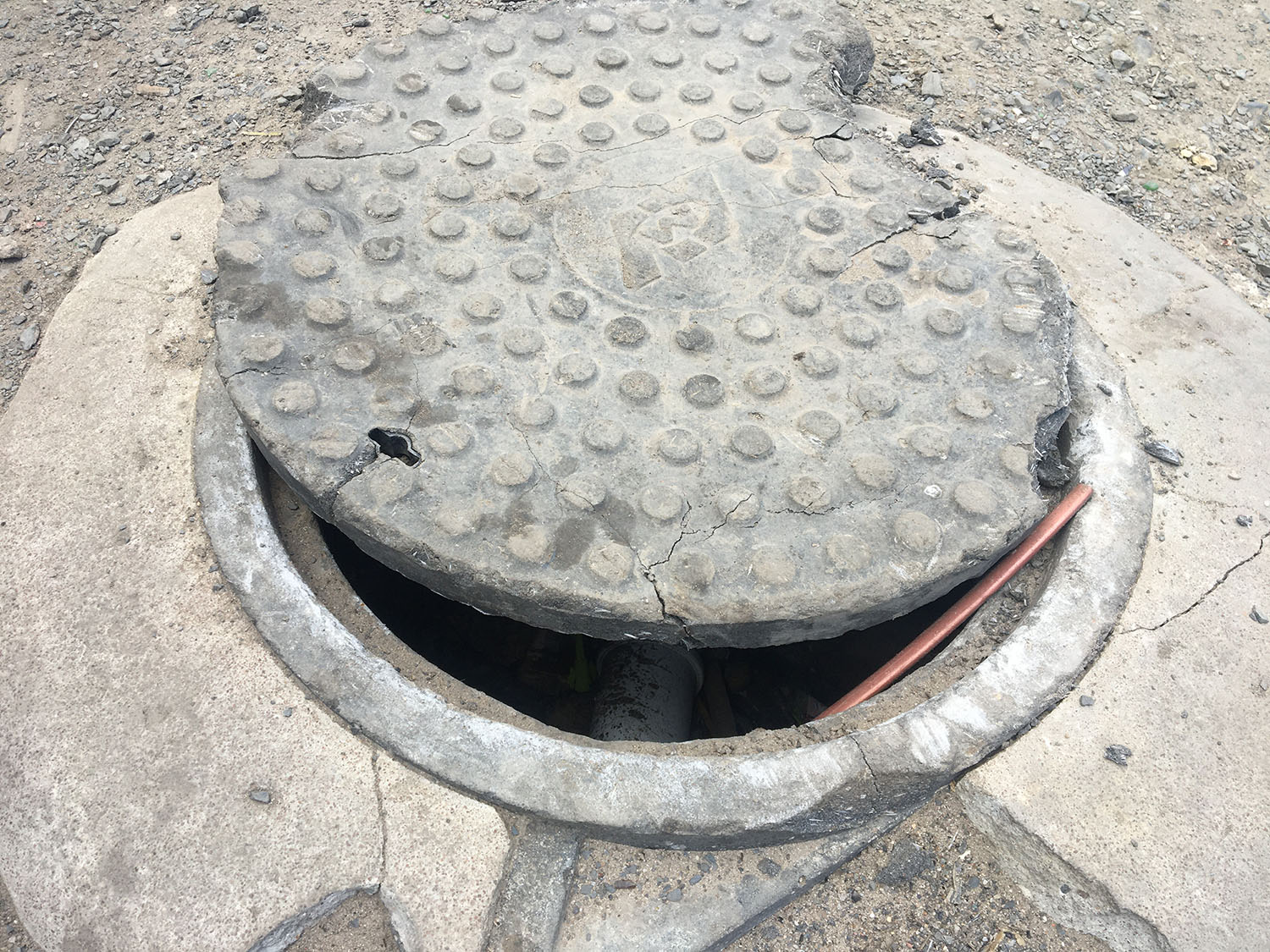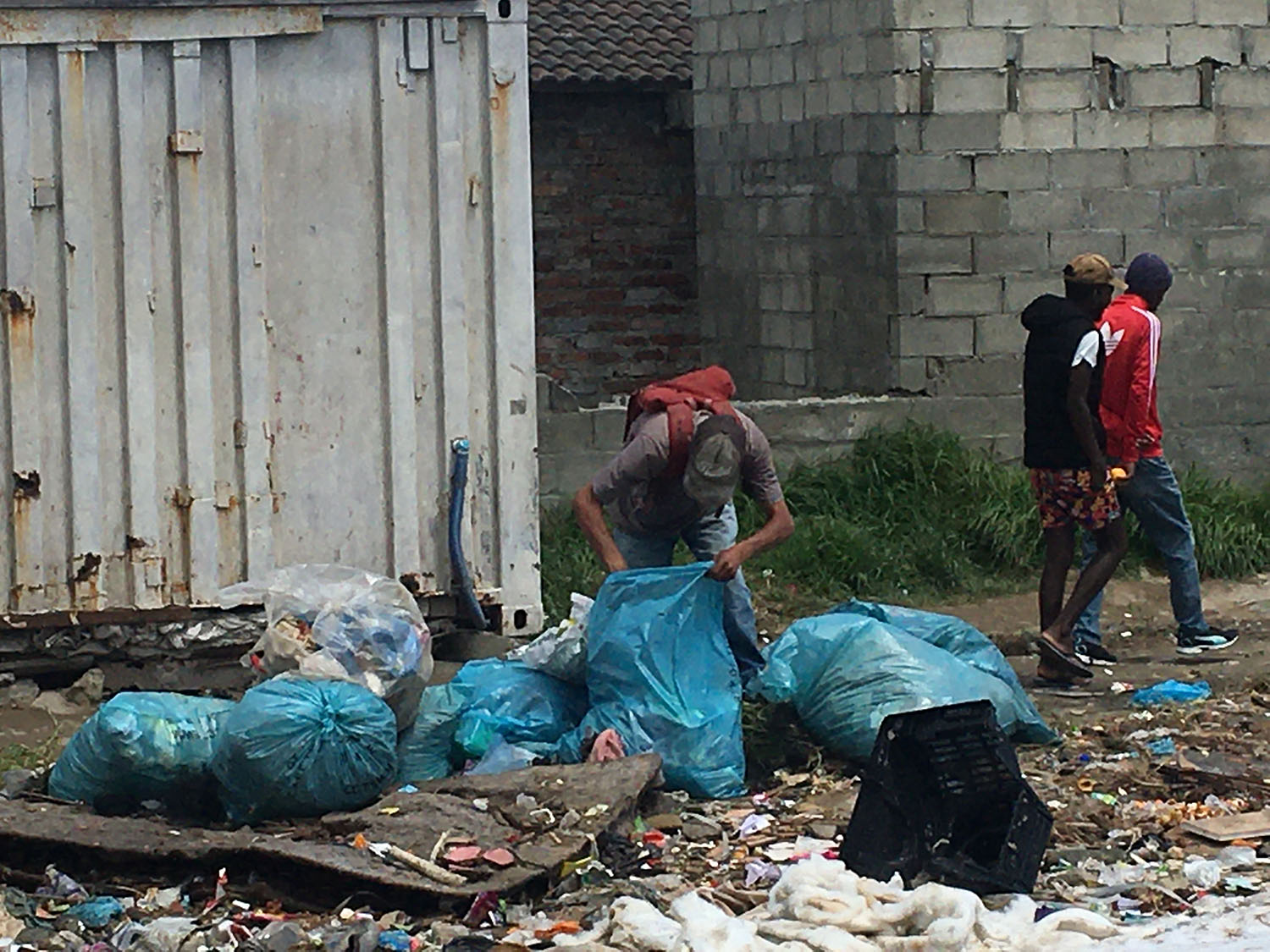Community Mapping
For community mapping the research team worked on foot across Sweet Home Farm with 16 participants – of whom half were prior digital storytellers and the balance being invited by those participants to be involved. After the aims, objectives and process of this methodology was explained, the team headed into the field in a process entirely led by the participants who took researchers to a particular geographic site of relevance for the localised flooding challenge. These sites could be anywhere of significance for the participant and created important opportunity for open-ended discussion to learn more about this significance. Recording devices, GPS, cameras/video and sound recorders were used to document the process. Once all participants had shared their local sites of significance with the team all headed to the local workshop venue where individual maps were drawn of each participant’s perspective of the community and the climate challenge, and a range of questions asked, discussed and documented. Finally, in a group exercise the participants reviewed and annotated a high resolution aerial photo of the site according to their experiences of flooding. In Sweet Home Farm the participants annotated the aerial photo with details of the challenge – such as low lying sites where flooding is a regular occurrence, blocked trains, leaky taps, and areas of rubbish accumulation alongside other spatial perspectives to the localised flooding challenge.
